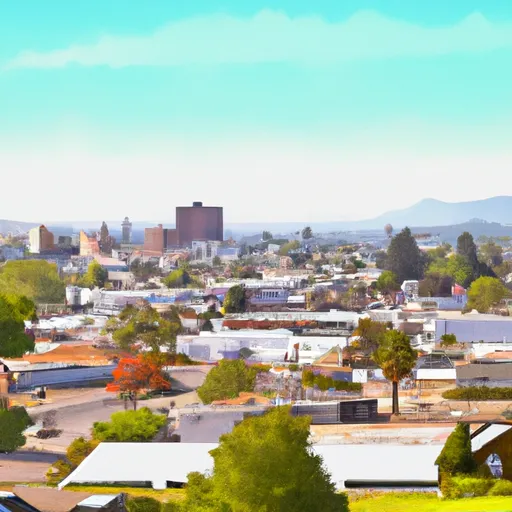-
 Snoflo Premium
Snoflo Premium
Get unlimited access to all our content
With no Ad interruptions! - Start Your Free Trial Login with existing account
Westley
Eden Index
Climate
9.0
•
Recreation
2.8
•
Community
0.8
•
Safeguard
4.8/10

Westley, California is a small town located in Stanislaus County, in the Central Valley region of California. The town experiences a Mediterranean climate, characterized by hot, dry summers and mild, wet winters. Average temperatures range from highs of around 95°F (35°C) in summer to lows of 40°F (4°C) in winter. Precipitation is relatively low, with an average annual rainfall of about 11 inches (28 cm).
Hydrologically, Westley is situated near the San Joaquin River, which is an important water source for the region. The river supports various aquatic species and provides irrigation water for agriculture in the surrounding areas.
Outdoor recreation opportunities in Westley include several nearby parks and natural areas. The nearby San Joaquin River National Wildlife Refuge offers opportunities for birdwatching, wildlife observation, and nature photography. Del Puerto Canyon, located to the west of Westley, provides scenic vistas, hiking trails, and camping facilities. Additionally, nearby Lake Del Valle State Recreation Area offers boating, fishing, swimming, and picnicking opportunities.
In summary, Westley, California experiences a Mediterranean climate, has access to the San Joaquin River, and offers outdoor recreation opportunities such as birdwatching, hiking, camping, and water activities in nearby natural areas.
What is the Eden Index?
The Snoflo Eden Index serves as a comprehensive rating system for regions, evaluating their desirability through a holistic assessment of climate health, outdoor recreation opportunities, and natural disaster risk, acknowledging the profound impact of these factors on livability and well-being.
Climate Health Indicator (CHI): 9.0
Westley receives approximately
291mm of rain per year,
with humidity levels near 60%
and air temperatures averaging around
17°C.
Westley has a plant hardyness factor of
9, meaning
plants and agriculture in this region tend to thrive here all year round.
By considering the ideal temperature range, reliable water supplies, clean air, and stable seasonal rain or snowpacks, the Climate Health Indicator (CHI) underscores the significance of a healthy climate as the foundation for quality living.
A healthy climate is paramount for ensuring a high quality of life and livability in a region, fostering both physical well-being and environmental harmony. This can be characterized by ideal temperatures, reliable access to water supplies, clean air, and consistent seasonal rain or snowpacks.
Weather Forecast
Streamflow Conditions
San Joaquin
Area Rivers
San Joaquin
Snowpack Depths
San Joaquin
Reservoir Storage Capacity
San Joaquin
Groundwater Levels
Recreational Opportunity Index (ROI): 2.8
The Recreational Opportunity Index (ROI) recognizes the value of outdoor recreational options, such as parks, hiking trails, camping sites, and fishing spots, while acknowledging that climate plays a pivotal role in ensuring the comfort and consistency of these experiences.
Access to outdoor recreational opportunities, encompassing activities such as parks, hiking, camping, and fishing, is crucial for overall well-being, and the climate plays a pivotal role in enabling and enhancing these experiences, ensuring that individuals can engage in nature-based activities comfortably and consistently.
Camping Areas
| Campground | Campsites | Reservations | Toilets | Showers | Elevation |
|---|---|---|---|---|---|
| Dos Reis | None | 27 ft | |||
| Caswell Memorial State Park | 65 | 89 ft | |||
| Sharpe RV Military | None | 26 ft | |||
| Frank Raines Regional Park | 34 | 1,121 ft |
Nearby Ski Areas
Catastrophe Safeguard Index (CSI):
The Catastrophe Safeguard Index (CSI) recognizes that natural disaster risk, encompassing floods, fires, hurricanes, and tornadoes, can drastically affect safety and the overall appeal of an area.
The level of natural disaster risk in a region significantly affects safety and the overall livability, with climate change amplifying these risks by potentially increasing the frequency and intensity of events like floods, fires, hurricanes, and tornadoes, thereby posing substantial challenges to community resilience and well-being.
Community Resilience Indicator (CRI): 0.8
The Community Resilience Indicator (CRI) recognizes that education, healthcare, and socioeconomics are crucial to the well-being of a region. The CRI acknowledges the profound impact of these elements on residents' overall quality of life. By evaluating educational resources, healthcare accessibility, and economic inclusivity, the index captures the essential aspects that contribute to a thriving community, fostering resident satisfaction, equity, and social cohesion.

